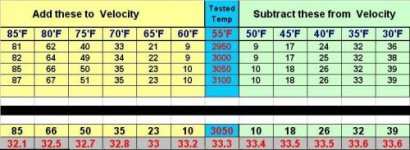rooshooter
New member
Tuning for different altitude.(Density Altitude)
If a rifle was in tune at sea level, then you went up in altitude, say to 6000 feet, generally speaking what way would you need to adjust the powder charge if the temperature stays the same. Not interested in elevation settings, just keeping the same tune/velocity
If a rifle was in tune at sea level, then you went up in altitude, say to 6000 feet, generally speaking what way would you need to adjust the powder charge if the temperature stays the same. Not interested in elevation settings, just keeping the same tune/velocity
Last edited:


